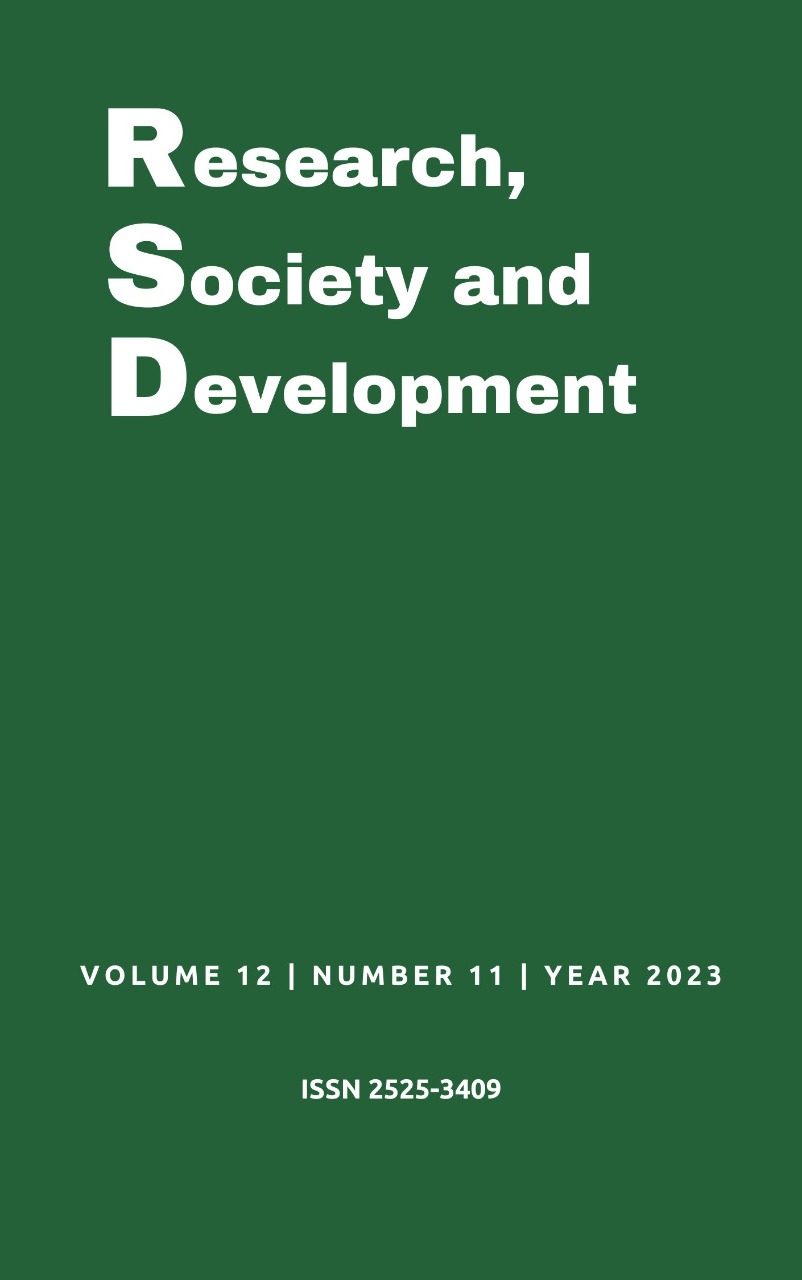The importance of facilitating strategies in dental treatment in patients with Autism Spectrum Disorder (ASD)
DOI:
https://doi.org/10.33448/rsd-v12i11.43785Keywords:
Strategy, Autism spectrum disorder, Dental care.Abstract
Introduction: It is essential to constantly search for alternatives that accommodate autistic patients, applying strategies that help in communicating with them, considering verbal, non-verbal, illustrative and sensory methods. Objectives: the main objective of this work is to highlight the importance of using facilitating strategies in dental treatment for patients with ASD, through a literature review, optimizing the quality of care for people on the autism spectrum, and educating professionals and parents. Materials and Methods: It is based on a bibliographical research of the integrative literature review type on the use of techniques and strategies to facilitate dental care for autistic patients. Literature review: it is reported that some techniques make consultation even easier, they are called basic and advanced. Considering as basic, those that involve non-verbal communication, distractions, offering rewards. The advanced ones include general anesthesia, a very effective alternative to invasive procedures. Conclusion: Each treatment must be individualized, based on your needs, always seeking to fit into the world of the patient with ASD, bringing innovations that reduce discomfort at the time of the consultation.
References
Amaral, L. D. (2013). Comportamento de profissionais de saúde e familiares na abordagem integral das necessidades da saúde bucal de autistas em São José do Rio Preto.
Araujo, F. S., Gaujac, C., Trento, C. L., & do Amaral, R. C. (2021). Pacientes com Transtorno do Espectro Autista e desafio para atendimento odontológico–revisão de literatura. Research, Society and Development, 10(14), e496101422317-e496101422317.
Berry-Kravis, E. (2014). Mechanism-based treatments in neurodevelopmental disorders: fragile X syndrome. Pediatric neurology, 50(4), 297-302.
Brasil. (2012). Lei nº 12.764, de 27 de dezembro de 2012. Institui a Política Nacional de Proteção dos Direitos da Pessoa com Transtorno do Espectro Autista. Diário Oficial da República Federativa do Brasil.
Brasil. (2014). Diretrizes de atenção à reabilitação da pessoa com Transtornos do Espectro do Autismo (TEA). Ministério da Saúde., Brasília, DF.
Brito, A. R., & Vasconcelos, M. M. D. (2016). Conversando sobre autismo-reconhecimento precoce e possibilidades terapêuticas. CAMINHA, Vera Lúcia; HUGUERIN, Juliane; ASSIS, Lúcia M.: e ALVES, Priscila Pires. Autismo: vivências e Caminhos. São Paulo: Blucher, 3.
Busato, P., Garbín, R. R., Santos, C. N., Paranhos, L. R., & Rigo, L. (2017). Influence of maternal anxiety on child anxiety during dental care: cross-sectional study. Sao Paulo Medical Journal, 135, 116-122.
Coimbra, B. S., Soares, D. C. L., da Silva, J. A., & Varejão, L. C. (2020). Abordagem odontológica a pacientes com transtorno do espectro autista (TEA): uma Revisão da literatura. Brazilian Journal of Development, 6(12), 94293-94306.
da Silva, M. J. L., da Silva, L. C., Faker, K., Tostes, M. A., & Cancio, V. (2019). Pacientes com transtorno do espectro autista: conduta clínica na odontologia. Revista Uningá, 56(S5), 122-129.
Delli, K., Reichart, P. A., Bornstein, M. M., & Livas, C. (2013). Management of children with autism spectrum disorder in the dental setting: concerns, behavioural approaches and recommendations. Medicina oral, patologia oral y cirugia bucal, 18(6), e862.
Gomes, K. A. S. (2019). Autismo: uma abordagem comportamental.
Marion, I. W., Nelson, T. M., Sheller, B., McKinney, C. M., & Scott, J. M. (2016). Dental stories for children with autism. Special Care in Dentistry, 36(4), 181-186.
Marulanda, J., Aramburo, E., Echeverri, A., Ramírez, K., & Rico, C. (2013). Dentistry for the Autistic Patient. CES Odontología. 26(2), página inicial-final.
Nagendra, J., & Jayachandra, S. (2012). Autism spectrum disorders: dental treatment considerations. Journal of international dental and medical research, 5(2), 118-121.
Nelson, T., Chim, A., Sheller, B. L., McKinney, C. M., & Scott, J. M. (2017). Predicting successful dental examinations for children with autism spectrum disorder in the context of a dental desensitization program. The Journal of the American Dental Association, 148(7), 485-492.
Volpato, S., Predebon, A., Darold, F. F., & Gallon, A. (2013). Método educacional para autistas: reforço alternativo para o tratamento odontológico utilizando sistema de comunicação por figuras. Ação Odonto, 1(1), 85-98.
Queiroz, F. D. S., Rodrigues, M. M. L. D. F., Cordeiro Junior, G. A., Oliveira, A. D. B., Oliveira, J. D. D., & Almeida, E. R. D. (2014). Avaliação das condições de saúde bucal de Portadores de Necessidades Especiais. Revista de Odontologia da UNESP, 43, 396-401.
da Costa Sant’Anna, L. F., Barbosa, C. C. N., & Brum, S. C. (2017). Atenção à saúde bucal do paciente autista. Revista Pró-UniverSUS, 8(1).
Rother, E. T. (2007). Revisão sistemátiva x revisão narrativa. Acta paul. enferm. 20
Santana, L. M., Leite, G. D. J. F., Martins, M. A., Palma, A. B. O., & de Castro Oliveira, C. (2020). Pacientes autistas: manobras e técnicas para condicionamento no atendimento odontológico. Revista Extensão & Sociedade, página 11-12.
Silva, A. C., Pereira, C. S., dos Anjos, G. M., Borges, D. C., Júnior, H. M., & Pereira, L. B. (2021). Estratégias para o condicionamento comportamental em pacientes com transtorno do espectro autista durante o atendimento odontológico. Research, Society and Development, 10(16), e16101623078-e16101623078.
Downloads
Published
Issue
Section
License
Copyright (c) 2023 Danilo Reginaldo da Silva; Janio Nunes de Lima; Cácio Lopes Mendes

This work is licensed under a Creative Commons Attribution 4.0 International License.
Authors who publish with this journal agree to the following terms:
1) Authors retain copyright and grant the journal right of first publication with the work simultaneously licensed under a Creative Commons Attribution License that allows others to share the work with an acknowledgement of the work's authorship and initial publication in this journal.
2) Authors are able to enter into separate, additional contractual arrangements for the non-exclusive distribution of the journal's published version of the work (e.g., post it to an institutional repository or publish it in a book), with an acknowledgement of its initial publication in this journal.
3) Authors are permitted and encouraged to post their work online (e.g., in institutional repositories or on their website) prior to and during the submission process, as it can lead to productive exchanges, as well as earlier and greater citation of published work.


